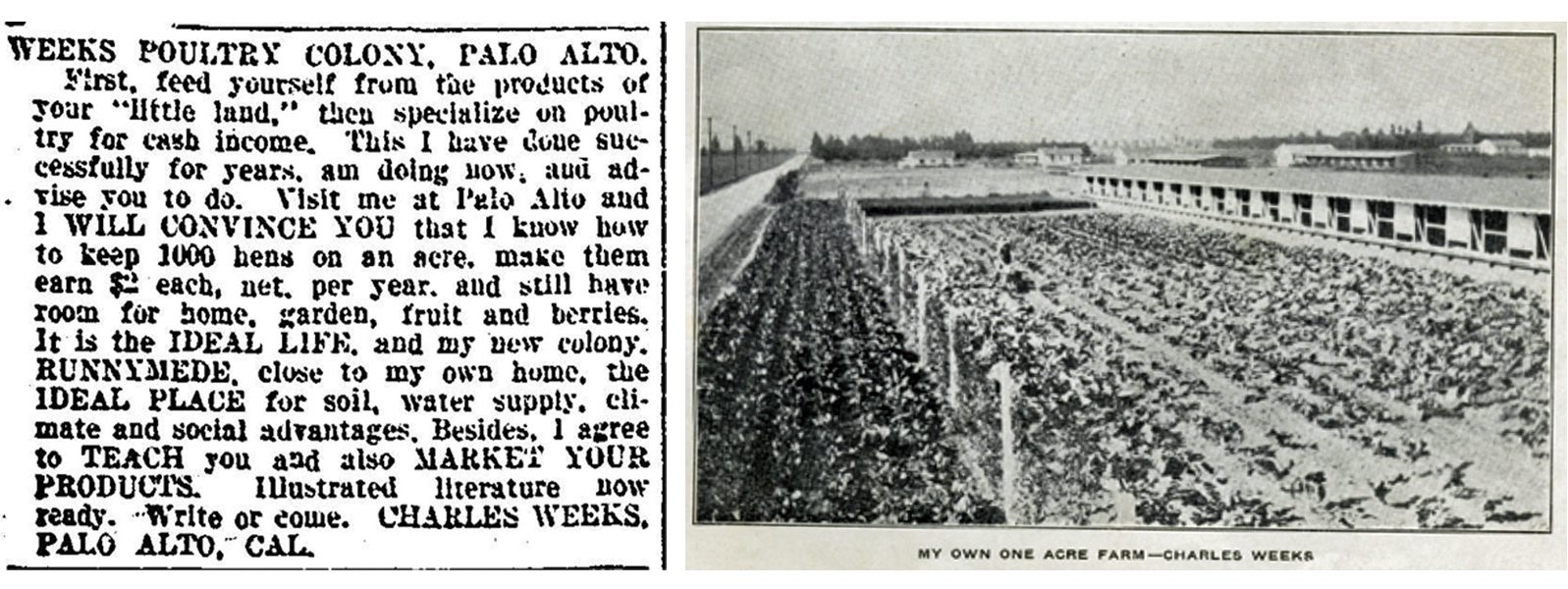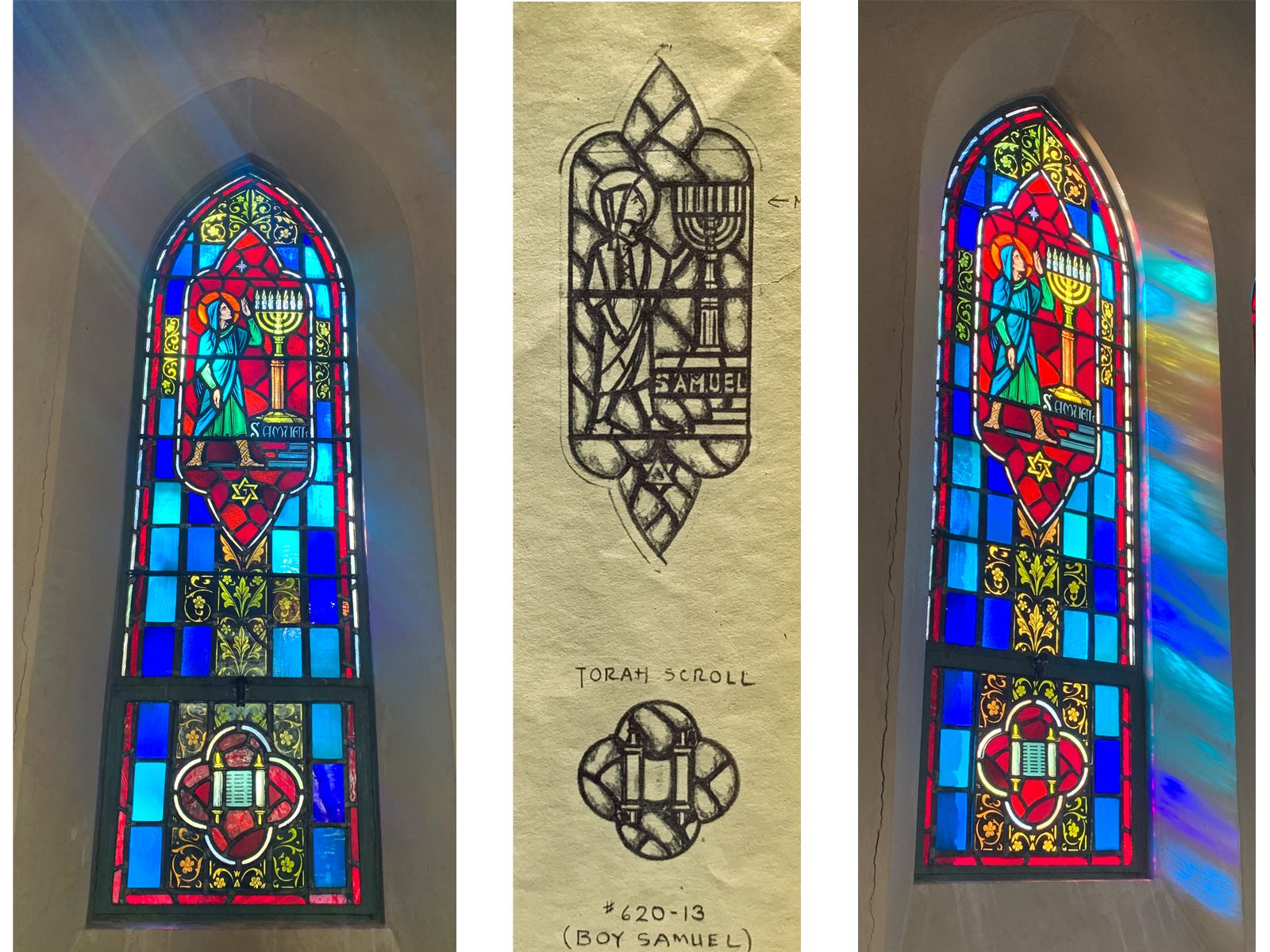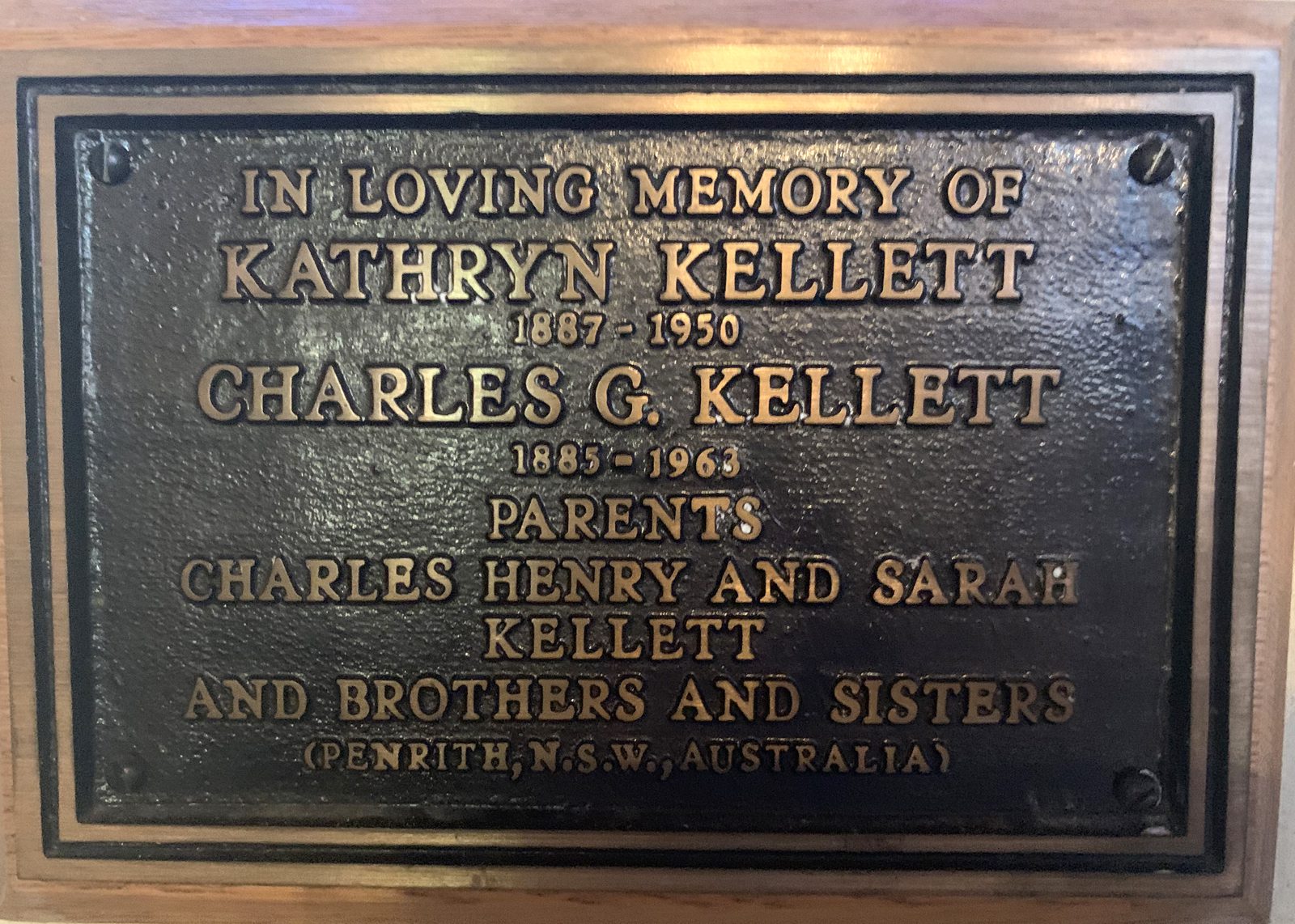The window was given in memory of Charles G. Kellett, Kathryn Kellett, Charles Henry and Sarah Kellett, and Charles’ brothers and sisters.
The Samuel window was designed by Cummings Studio, San Francisco, cost $1,114.86 and is 28″ x 92″.
Charles Gordon Kellett was the 7th of 10 children born to Charles and Sarah Kellett in Penrith, Australia where his father was the local postmaster. He emigrated to the United States in 1904 when he was 22 years old (Petitions for Naturalization). An article in the local paper is a reminder of how momentous it was to leave your homeland in a time when communication was limited and family members knew they might not see each other for a long time, if ever again:
“On Thursday night of last week Mr. Charles Kellett…who has lived in Penrith all of his life, was accorded a hearty send-off by his many friends on the eve of his departure for Canada, where he is going to try his luck all on his own….The hall was nicely decorated for the occasion, whilst the supper, provided by the ladies, was excellent…On behalf of those present, Mr. Kellett was presented with a splendid shaving set, cigarette case, and fountain pen…It was a pity he was going so far away as Canada, although it showed the pluck he had in him…his mother must feel his departure. The speaker concluded by wishing Mr. Kellett a safe journey and a happy and prosperous life. The company then sang ‘For He’s a Jolly Good Fellow,’ giving three cheers.” (Send Off to Mr. C. Kellett)
In July of 1917, the Penrith newspaper printed a letter from Charles Kellett describing his adventures since leaving Australia. He said that “he had traveled far and wide, and seen much of the world.” From Canada he went to Seattle, and eventually to San Francisco. When World War I broke out he hoped to join a British Regiment, but when he arrived in England, the army declined his services and redirected him to the British navy since he was a marine engineer. He served on a large USA mercantile marine vessel, traveling back and forth across the Atlantic, with cargo that he reported was “the most deadly explosives manufactured in the USA for use by the British Army.” (Letter from Ex Penrithian)
In 1916, Charles married Kathryn Koch in New York City. By 1917, Charles and Kathryn had moved to Buffalo, New York, and Charles was working at the Ford Motor plant. Their two sons – Marshall and Milton – were born in Buffalo. From 1922-1929, the family lived in San Francisco and Charles worked as a machinest and auto mechanic (US Census Records).

In 1916, entrepreneur Charles Weeks set up a utopian farm community in East Palo Alto. His vision was a community of small, one-acre farms that utilized a method of intensive poultry farming in coops. He purchased land in East Palo Alto and called his community Runnymeade. At one point there were 250 families living on 600 acres bounded by Bay Road, San Fransciquito Creek, Cooley’s Landing and Menalto Avenue and the Runnymeade community was one of the largest poultry producers in the United States (Remnants of a Failed Utopia). The community was successful until the late 1920’s when epidemics killed most of the chicken, salt water started to infiltrate the water system, and the Great Depression hit in 1929. Weeks lost everything, but there were still small farmers left in East Palo Alto until very recently.
Around 1930, the Kellett family moved to East Palo Alto, bought a farm on Weeks Street for $4500, and became poultry farmers.. Charles listed his occupation as poultry farmer throughout the difficult years of the 1930’s. By 1940, the Kellett’s still lived on Weeks Street, but were out of the poultry business. Charles had a “Floor Polishing” business and then, during World War II, Kathryn and Charles moved to 121 Washington Avenue in Palo Alto and he worked as a toll collector (US Census).

Kathryn Kellett died in 1950. A few months later, Charles returned to Penrith to visit the home he’d left 40 years before. After his trip, he returned to Palo Alto and lived on Washington Avenue for the rest of his life near both of his sons – Milton and Marshall – who lived in Palo Alto with their families. He died in 1963.
The records don’t show who gave the window in memory of the Kellett family, but it may be that Charles planned the window in memory of Kathryn and his parents and brothers and sisters, and then when he died, his sons included his name also.



